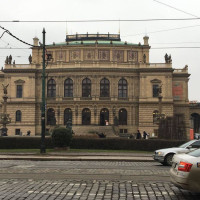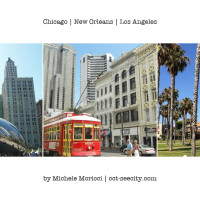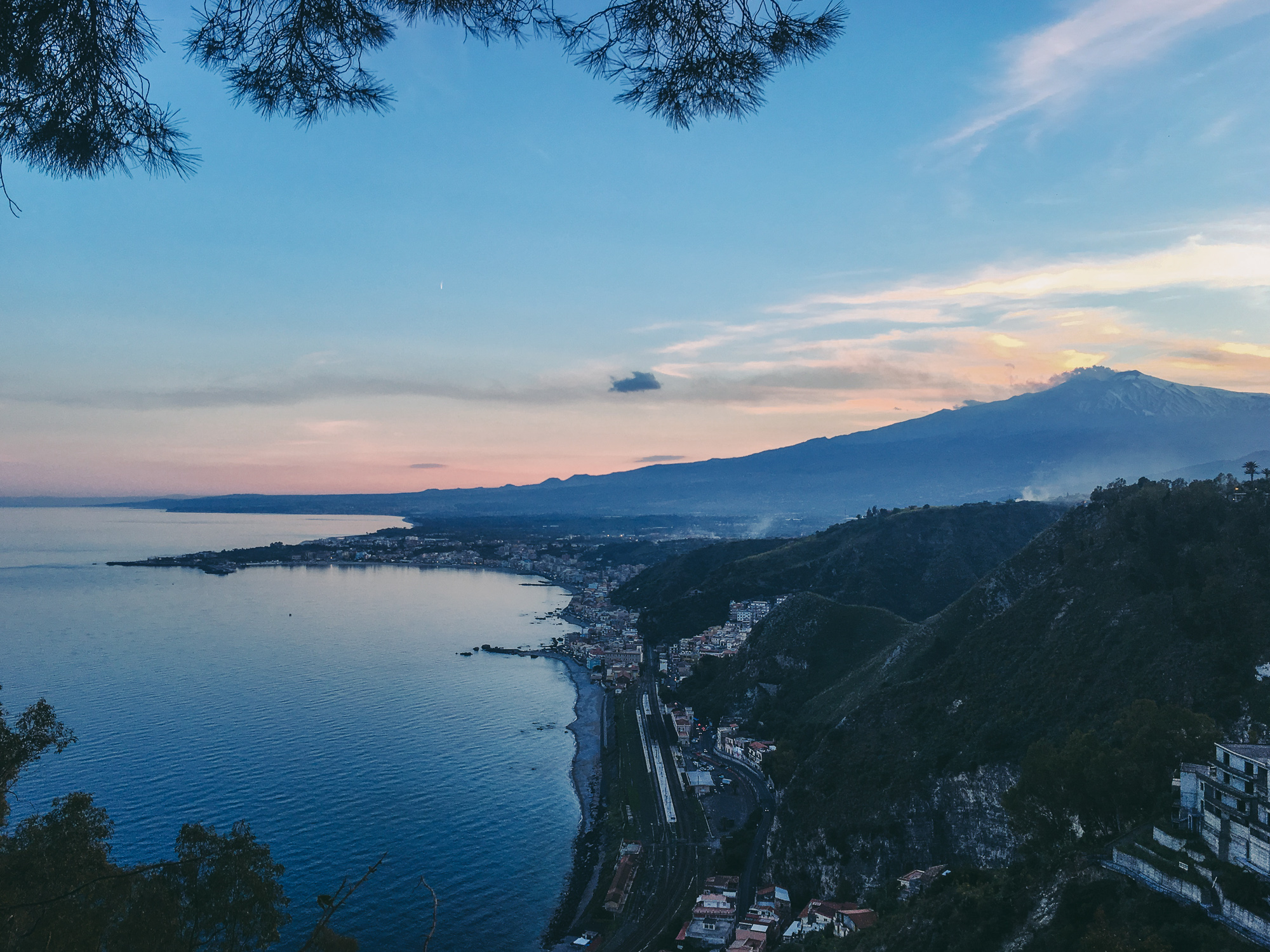
Text: Elena Mazzoni Wagner | Local Tips: Stefano Mirabile
CATANIA After you’ll have explored far and wide the old town, walked Via Etnea from Park of Villa Bellini to Pacini Garden, saying hello in Piazza Duomo to the Elephant that raises its proboscis to Saint Agata (who protects the city); after you’ll have gone through centuries of history, from the Roman Amphitheater to the Opera House Massimo Bellini, and drowned your gaze into the sea from a panoramic terrace; after you’ll have tasted raw fish at the fish market and tried the street food in via Plebiscito; after you’ll have had a snack with granita and brioche in one of the classic bars and quenched your thirst at a kiosk with Seltz, lemon and salt – then you’ll be ready to leave and discover the natural landscapes and small villages surrounding this great city founded at the foot of a volcano: the Etna, ‘u Mungibeddu or ‘a Muntagna as they say here, the largest active volcano in Europe (and UNESCO site since 2013).
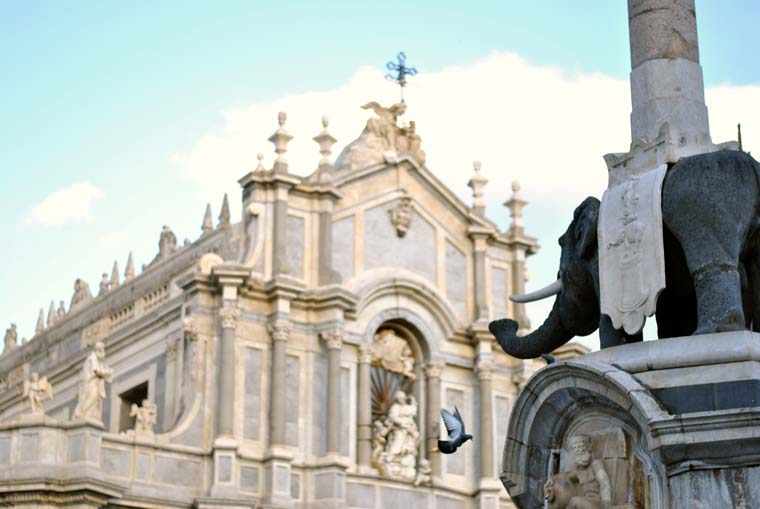
Travelling by car is certainly the best way to fully enjoy the landscape of Eastern Sicily, easily reach any destination and stop to admire Mount Etna and Ionian Sea at every glimpse, even more beautiful at sunset. Renting a car in Catania is simple and cheap by booking online with Discover Car Hire. You can find the most suitable means for every need: for example, in our case (three friends), we rented a Fiat 500 for six days and spent only € 66.48!
And in those days we learned people from Catania (like the rest of Sicilians) have the habit of calling squares and streets with names different from the official ones, a fact to consider especially when asking for directions! Some examples? Piazza Vittorio Emanuele is “Piazza Umberto” for all local people as it’s located halfway up Via Umberto I; or, Villa Pacini Park is for everyone “Villa ‘e Varagghi” (varagghi in Sicilian = sbadigli in Italian = yawns) as it’s a meeting point for the elderly who spend their time here sitting on benches (and yawning).
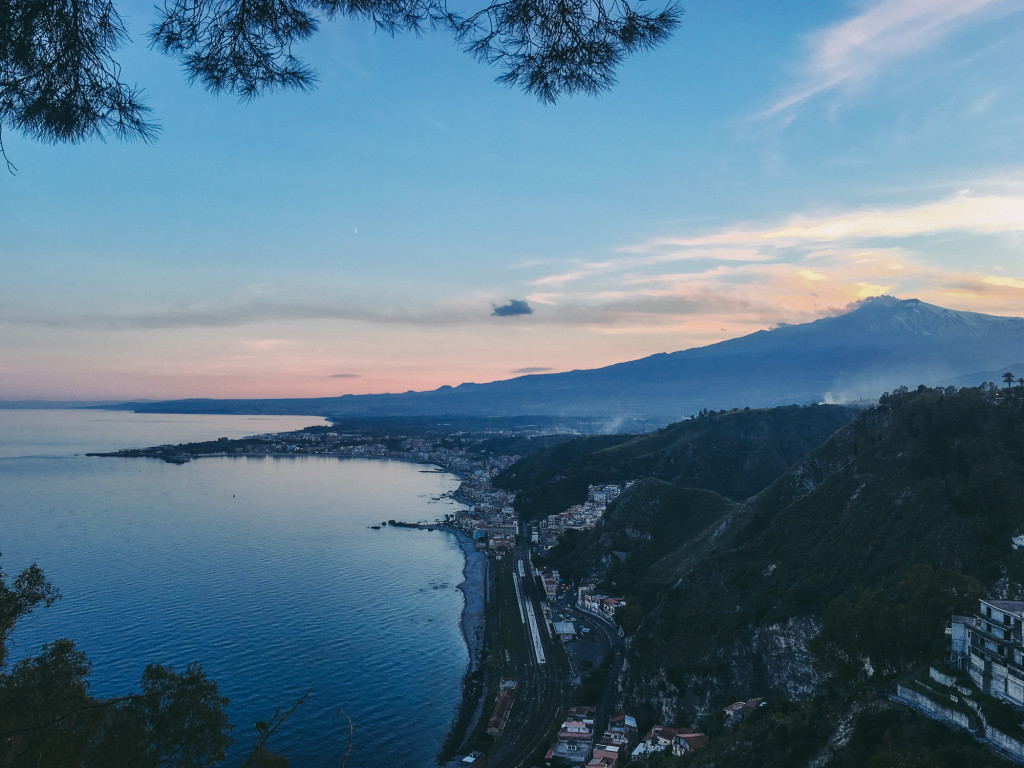
But let’s go back to our journey. In this article, we’re going to recommend you some places that – once in Catania – you absolutely can’t miss!
La Scogliera (The Cliff)
If before leaving the city you wish to dive into the sea, choose one of the resorts on the rocks and avoid the Playa (the beach, especially in mid summer): this way you’ll swim in cleaner and less crowded waters!
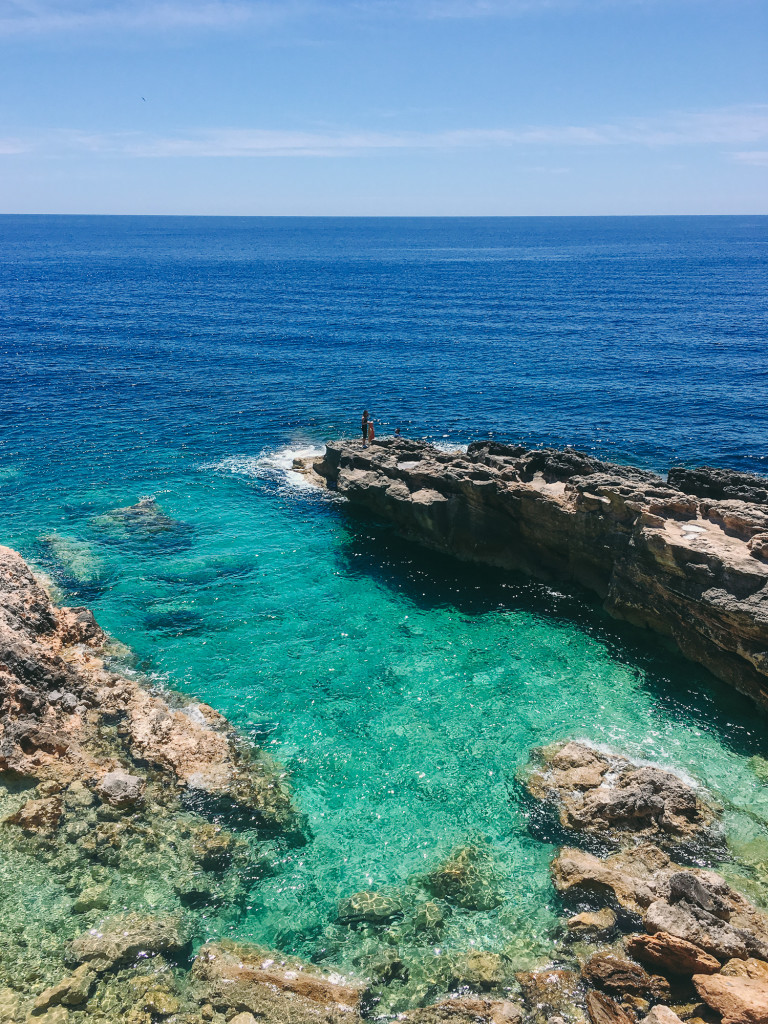
“Aci Tour” | Aci Castello > Aci Trezza > Acireale
Driving along the coast towards Messina, you’ll meet very soon three small fishing villages that the epic poet Homer with the Odyssey and the novelist Giovanni Verga with I Malavoglia have narrated leaving in these places eternal myths and endless stories. In this land, time has stopped and we must adapt: take at least two days to experience the local atmosphere, maybe sleeping for a night in Acireale, the largest village.
We started our “Aci Tour” from Aci Castello, where the name already invites you to visit the Byzantine Castle, under which you can swim! Then we headed to Aci Trezza: from the marina, by boat, you can easily reach the nature reserve consisting of the Island of Lachea and the Faraglioni dei Ciclopi. If you have little time, you can even just enjoy the sea stacks view sitting at Mythos bar with a granita in your hand. Acireale, instead, deserves a walk through its historic centre, a visit to the Cathedral and various baroque churches; then in the evening you move to Santa Maria La Scala or Capo Mulini, two neighbourhoods of fishermen, for a good fish dinner in one of the many seaside restaurants. In the end, the day after you can’t leave without exploring the nature reserve of La Timpa: lava stone terraces and dry stone walls, small paths and zig-zag routes, and for a long stretch a coast overlooking the sea. A dive at the Lighthouse of Capo Mulini and then we can continue the journey towards Messina. Next exit from the highway: Taormina.
Taormina
Exactly halfway between Catania and Messina (about 55 km from both cities), it’s in the province of Messina but it seems to be much more popular and loved by the Catanese people. Whether in summer or in winter, for walks along Corso Umberto or for swimming at Isola Bella, under the mid August stars or Christmas lights, this small town perched on Mount Tauro is always spectacular! Known in the world for its Ancient Greek-Roman Theatre (which often hosts concerts and shows), it has a small historic centre that overlooks cliffs descending down to the sea, forming coves with sandy beaches; and down here a narrow strip of sand connects to the tiny Isola Bella, a nature reserve that can be reached in a few minutes from the centre by a funicular railway.
Where to park | There are four parking areas, three of which (Lumbi, Porta Catania and Porta Pasquale) near the centre; the fourth (Mazzarò) is instead nearby Isola Bella.
Some tips | In addition to the Ancient Theatre, visit Villa of Taormina that boasts a beautiful English garden. Let your eyes drown into the sea from the Belvedere in Piazza IX Aprile. Enjoy an aperitif with a view from the terrace of the Metropole or Villa Ducale (two hotels in the city centre); or get a drink in Piazza, sitting on the steps of the famous Daiquiri Cocktail Bar. Options for diving into the sea: if Isola Bella is too crowded, the Hotel Caparena resort is a good alternative; for a good lunch we recommend walking from here to Il Re del Sole. Other places to taste and toast: Osteria RossoDiVino at the beginning of Porta Catania; pizza at Villa Zuccaro (above the Daiquiri) and for the sliced one, Panificio Cristina. Snack? Granita and brioche at the Bam Bar. Finally, a good place to sleep and dream: Terra Rossa Residence with a view of Isola Bella, parking and swimming pool. Ah! Nocturnal souls can have fun at the Morgana club.
A curiosity | French writer Guy de Maupassant in The wandering life (1885) wrote “Were a man to spend only one day in Sicily and ask, ‘What must one see?’ I would answer him without hesitation: Taormina.”
Zafferana Etnea
From Taormina, before heading to the black land of Etna (last destination of our journey), you must stop for brunch at the small town of Zafferana Etnea for at least two reasons, the piazza and the pizza, or rather: the panoramic view from Piazza Umberto I and the famous Siciliana, a sort of fried and stuffed pizza so good that the Catanese people come here from the city on purpose to eat the best one. Try it at Donna Peppina (an historical bar in Piazza).
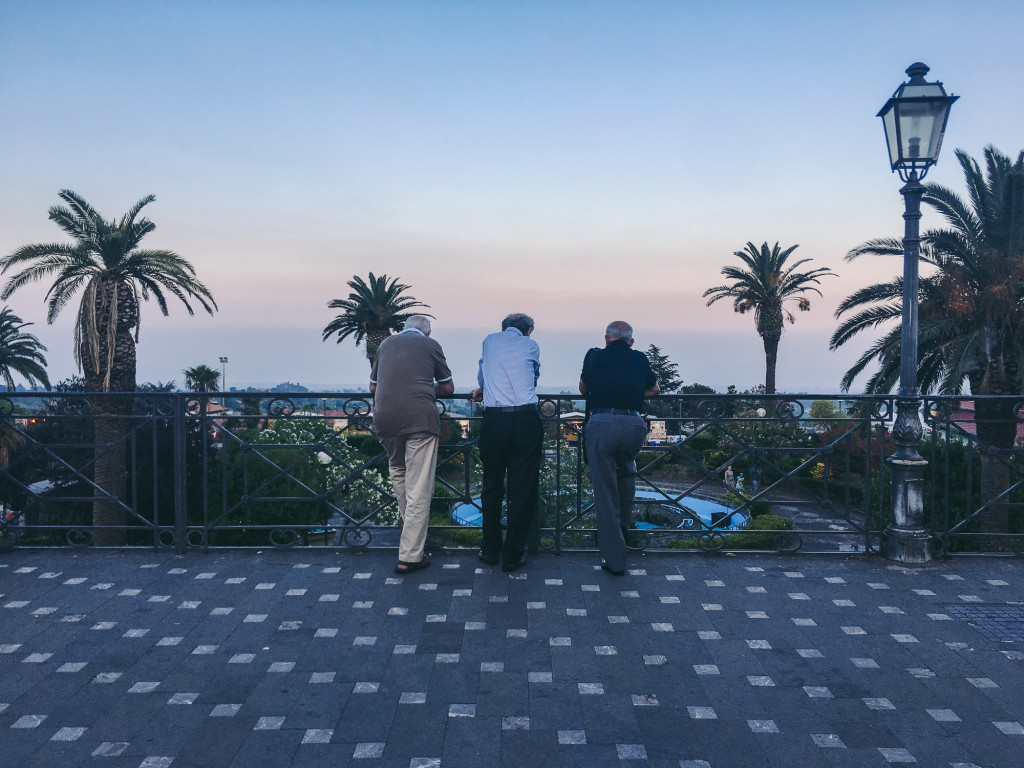
Etna
Here we are at our last destination: about 30 km from the city of Catania and at an altitude of 1.920 meters, the maximum point of arrival for cars and close to the cableway of Mount Etna: the highest active volcano in Europe with its 3.350 meters! From here, from the Sapienza Rifugio (lodge), guided excursions by off-road coach to the summit craters of the volcano start (from March to November) while in the winter season you can access the ski facilities. For those who love sport and nature, it’s also possible to undertake numerous trekking or mountain biking routes and thus reach even higher and extraordinary points of view, from which the lava landscape fades into the city and then falls into the sea. Black land and rocks, sometimes red or another shade; in winter they can even become white, or better, be covered by snow. When it happens (usually in December/February), nature offers an even more incredible show: imagine skiing on the top of this mountain with your eyes lost in the blue horizon between sky and sea!
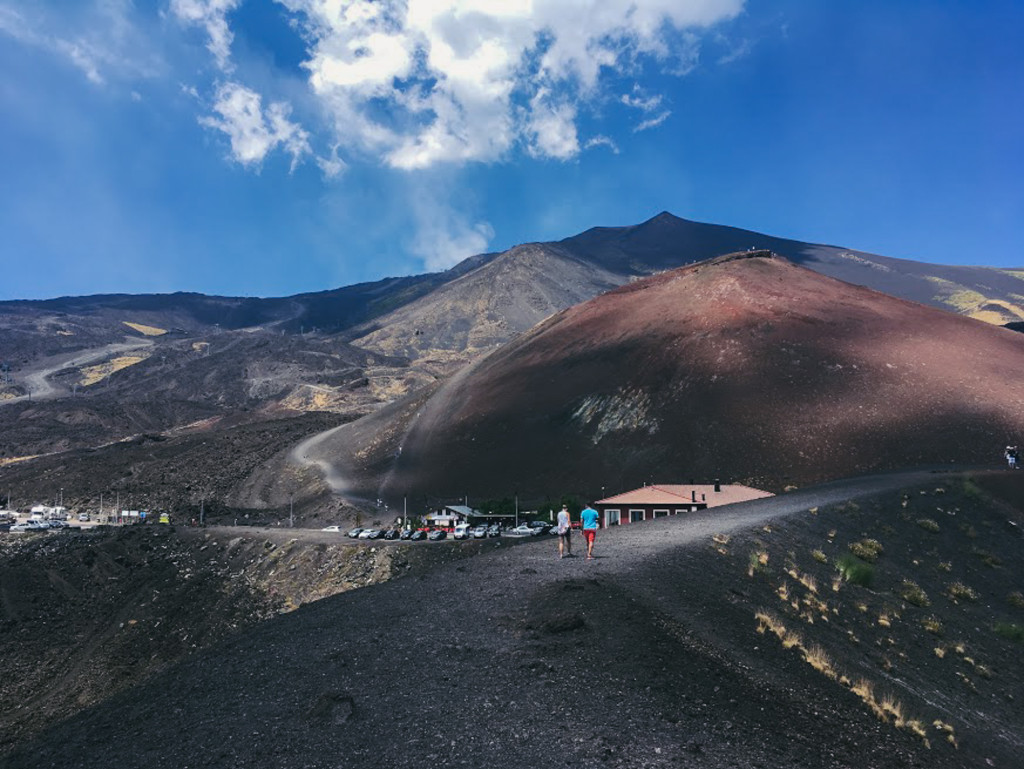
Together with a local guide, we have explored the east side, walking through the Valle del Bove (in the municipality of Zafferana Etnea): an immense expanse of lava rock, desolate and arid black land. Through the paths you can reach panoramic points (such as the top of Monte Zoccolaro or Schiena dell’Asino) with a breathtaking view of the entire valley and the coast that stretches from Taormina to Siracusa; at the same time you can admire the top of the volcano. For true walkers, this and much more! We who are not so athletic say here goodbye to Etna and go back to our car. We fill the trunk with all the excitement of the journey and leave again, promising to come back, maybe in winter, to see with our eyes how this intense black hair Lady looks like when she wears white.
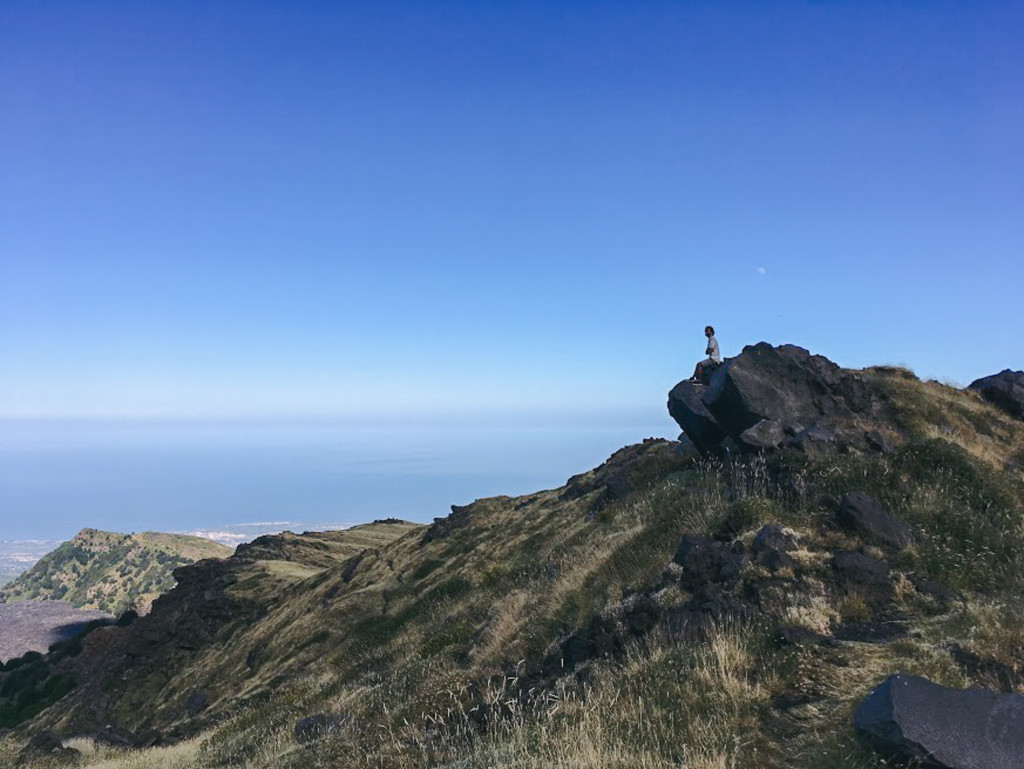
CCTips:
- Catania is always beautiful! An advice? Avoid the month of August, too many tourists!
- A special date: 5th February, when the Patron Saint of Catania is celebrated: Sant’Agata!
- Other villages that deserve a visit, especially during their local food festival called “sagre”: Nicolosi, Pedara, Lingua Glossa, Bronte (land of pistachios), Maletto (land of strawberries), Biancavilla and Paterno (land of oranges). In this case, the Trenino Circumetnea (a little train from the ’80s) that leaves from Catania can be an alternative means of transport and fun!
- Read also: Sicily in the mouth: a gastronomic tour in the Eastern part


